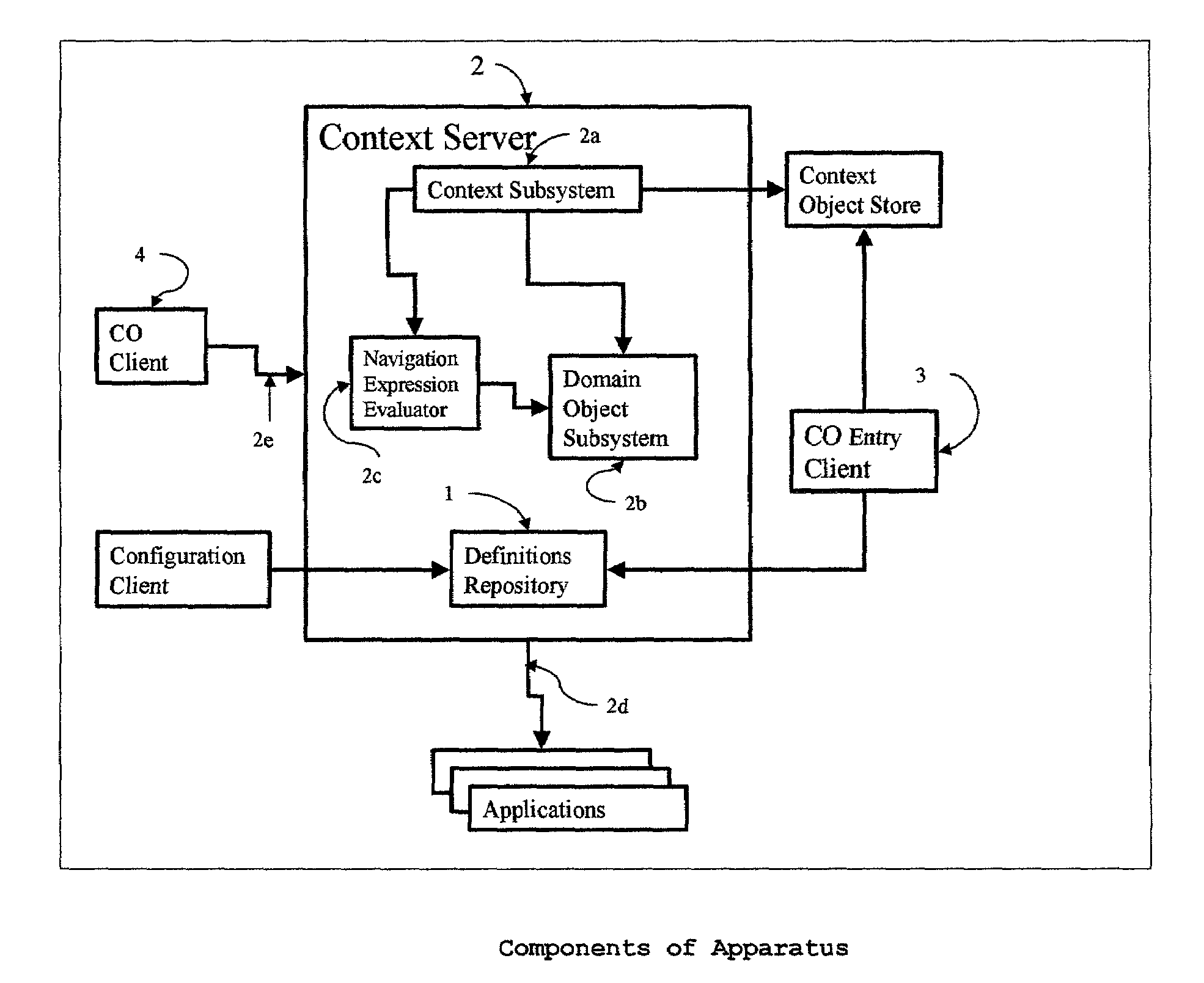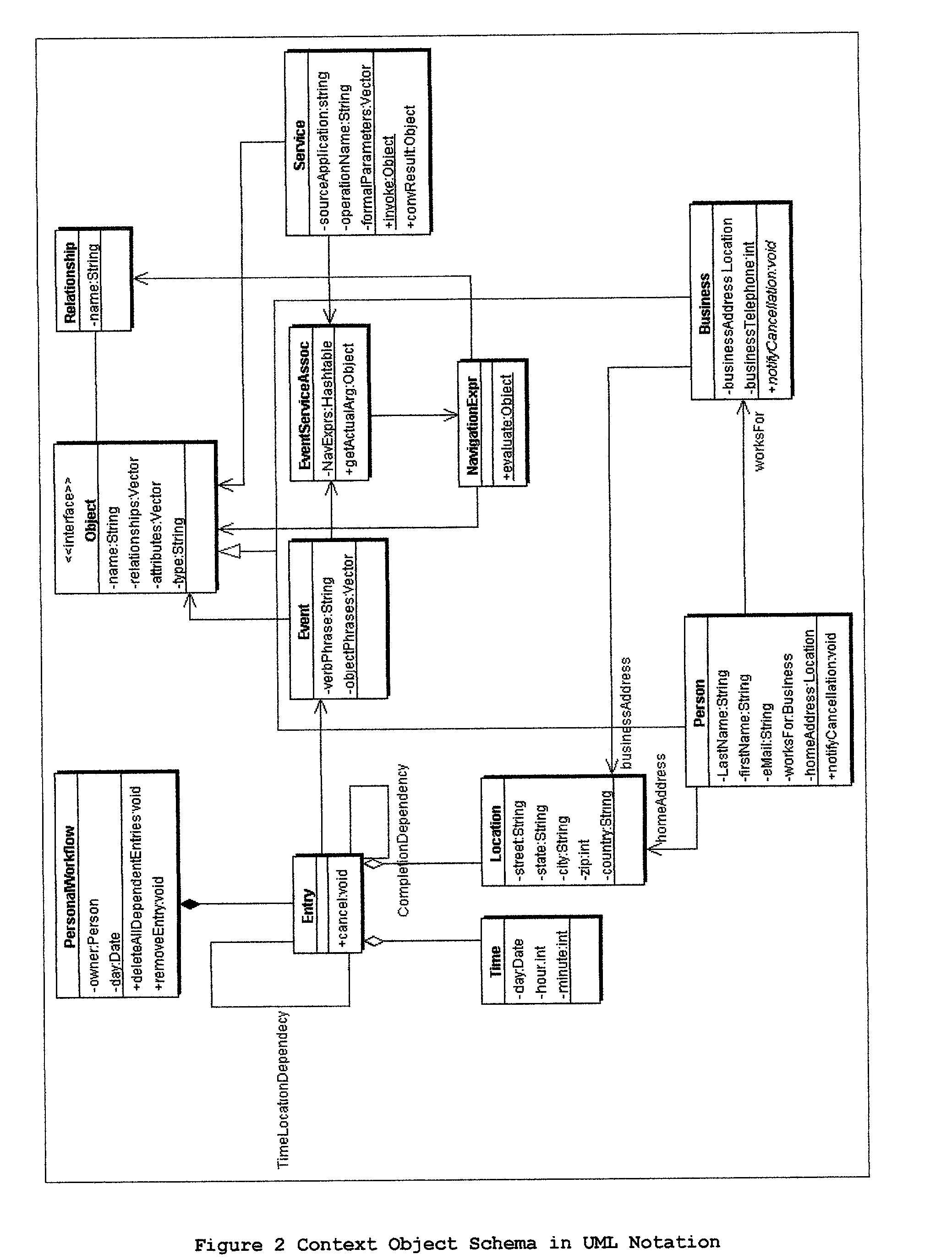In-context access to relevant services from multiple applications and information systems by object schema traversal
a technology of object schema and in-context access, applied in the computer field, can solve the problems of daunting development cost, inability to program case-by-case for every combination, and inability to readily access relevant services at a usage contex
- Summary
- Abstract
- Description
- Claims
- Application Information
AI Technical Summary
Benefits of technology
Problems solved by technology
Method used
Image
Examples
Embodiment Construction
[0042]This section provides a formal and detailed description of the disclosed method and apparatus.
[0043]The apparatus is driven by a set of definitional data. We first describe the constituents of the definitional data. Next we describe the components of the apparatus and show how the components use the definitions during their operation.
7.1 Definitions
[0044]Abstractly speaking, the method and apparatus is meant for automating access to application services in any usage context. For this purpose, we need to formalize the following:[0045]1. Description of Application Services,[0046]2. Description of what constitutes a usage context, and[0047]3. Ability to associate a specific usage context with a specific application service.
[0048]As seen in our example application of Section 6, any usage context can be abstracted as manipulation of objects, Called Context Objects. An Object Schema, that is a graph of objects and relationships, and that links Context Objects to parameter objects of...
PUM
 Login to View More
Login to View More Abstract
Description
Claims
Application Information
 Login to View More
Login to View More - R&D
- Intellectual Property
- Life Sciences
- Materials
- Tech Scout
- Unparalleled Data Quality
- Higher Quality Content
- 60% Fewer Hallucinations
Browse by: Latest US Patents, China's latest patents, Technical Efficacy Thesaurus, Application Domain, Technology Topic, Popular Technical Reports.
© 2025 PatSnap. All rights reserved.Legal|Privacy policy|Modern Slavery Act Transparency Statement|Sitemap|About US| Contact US: help@patsnap.com



